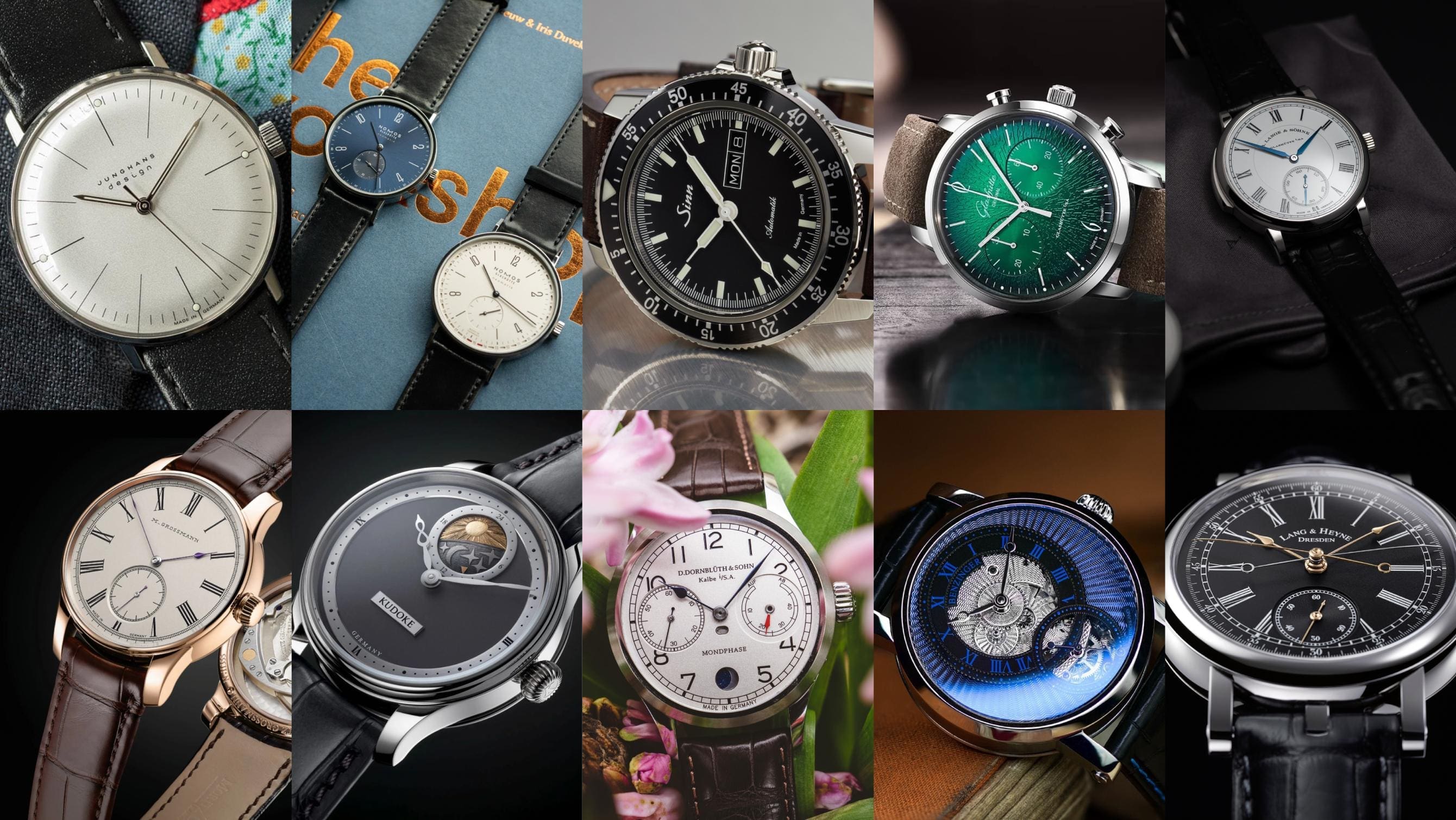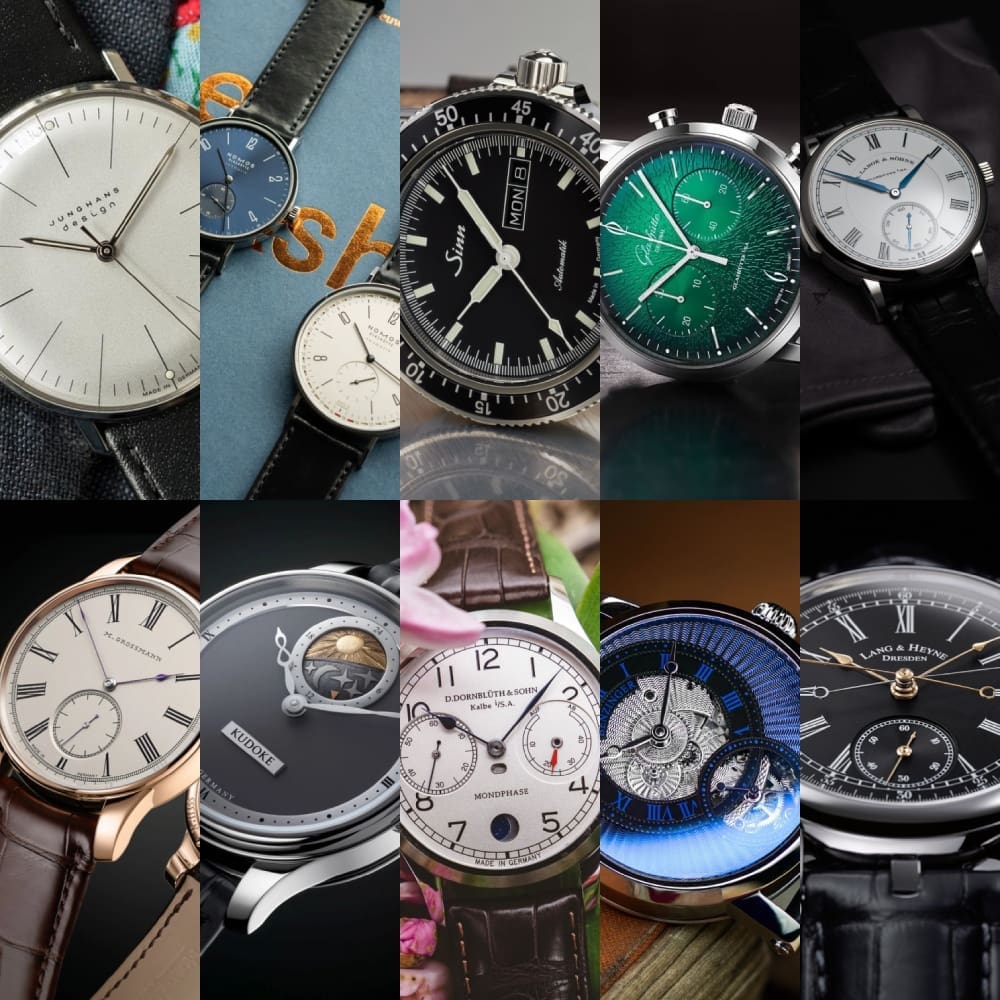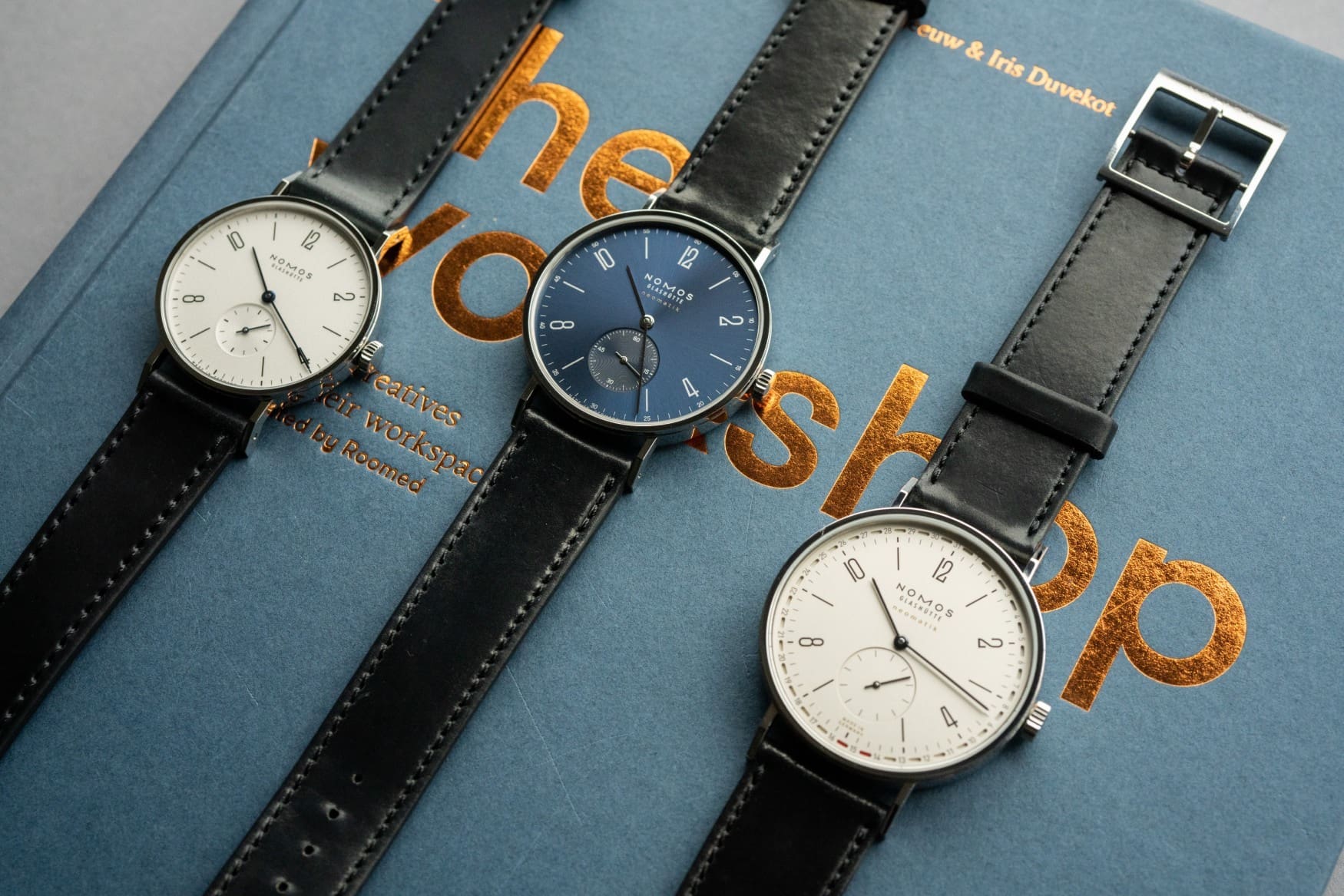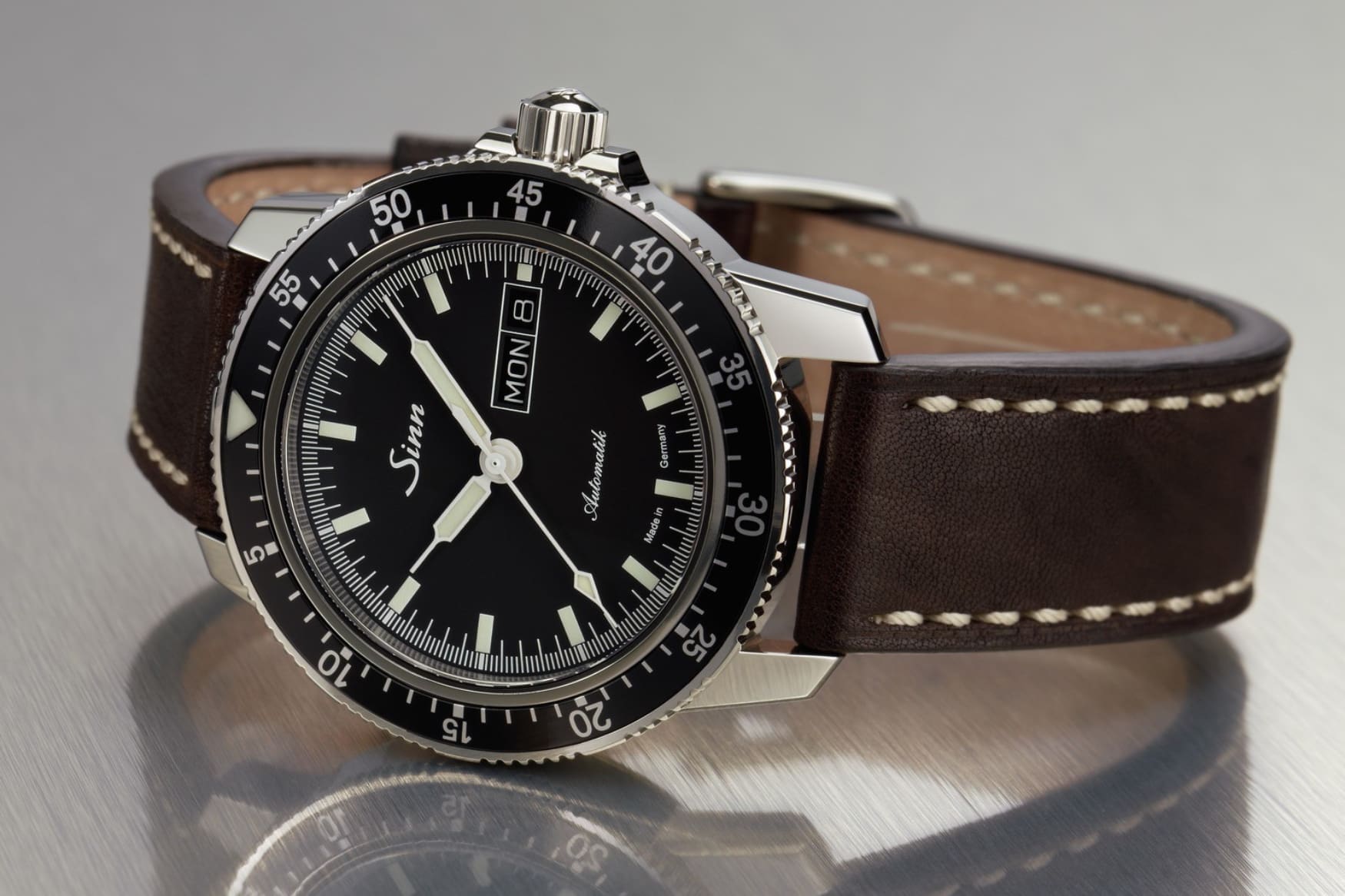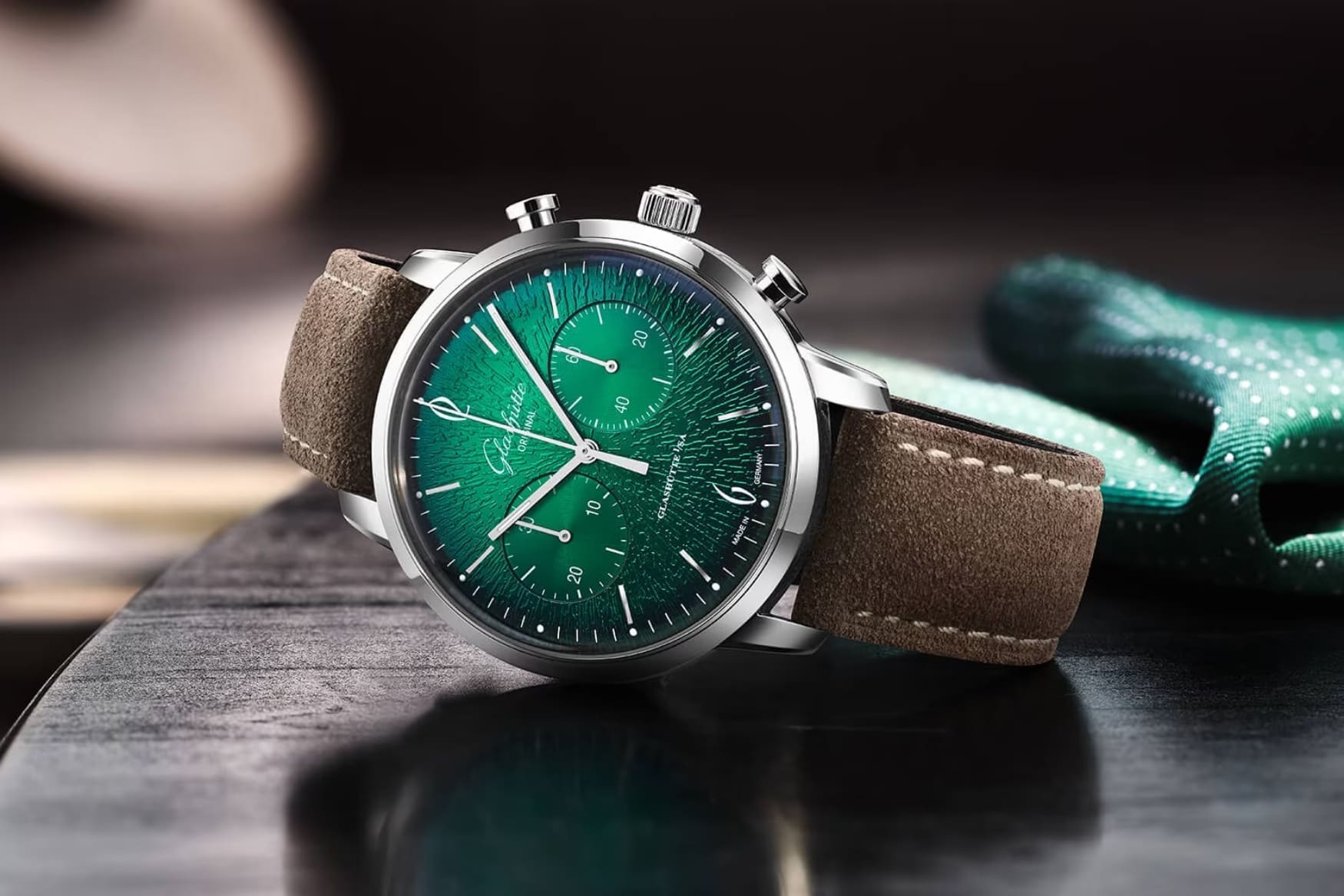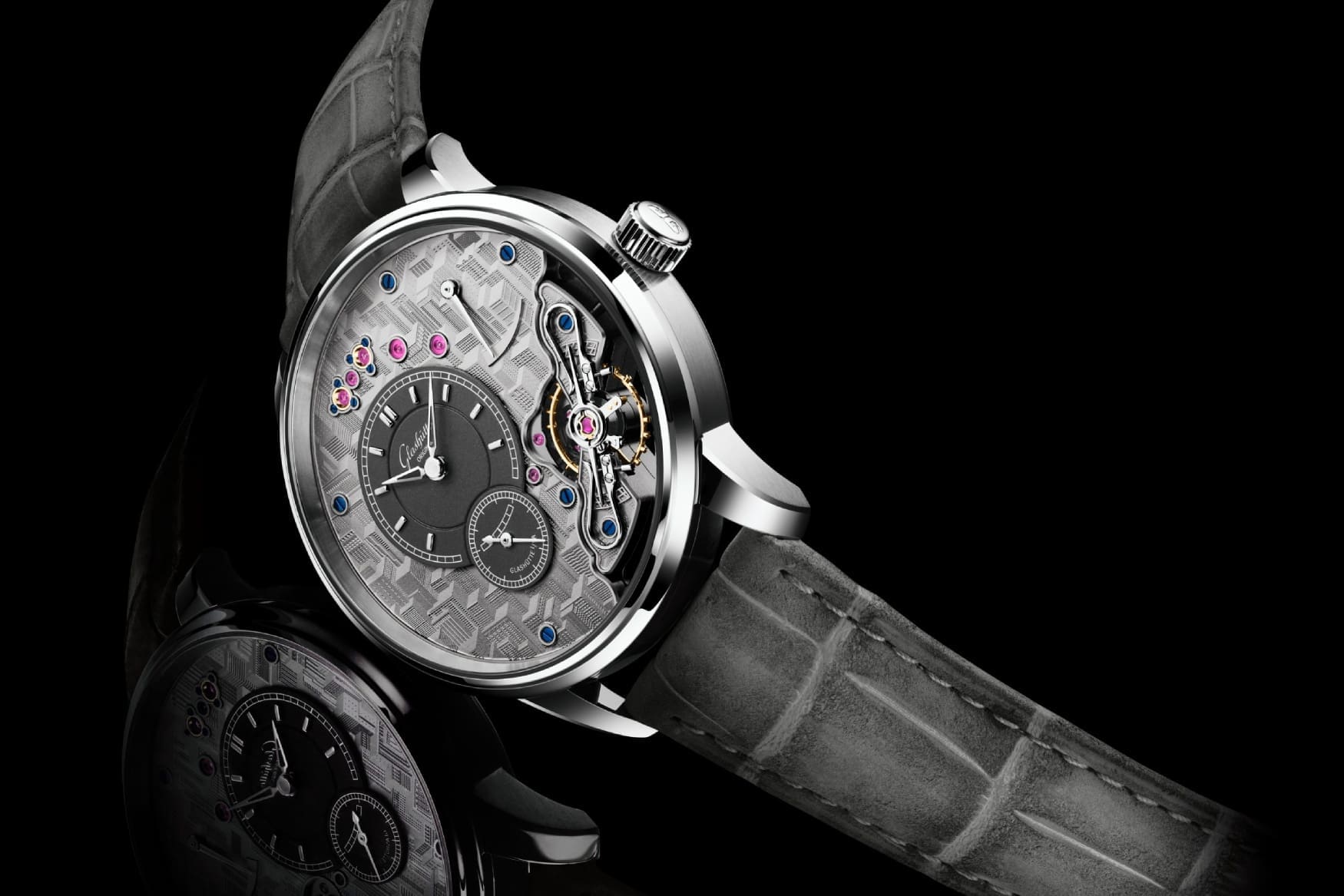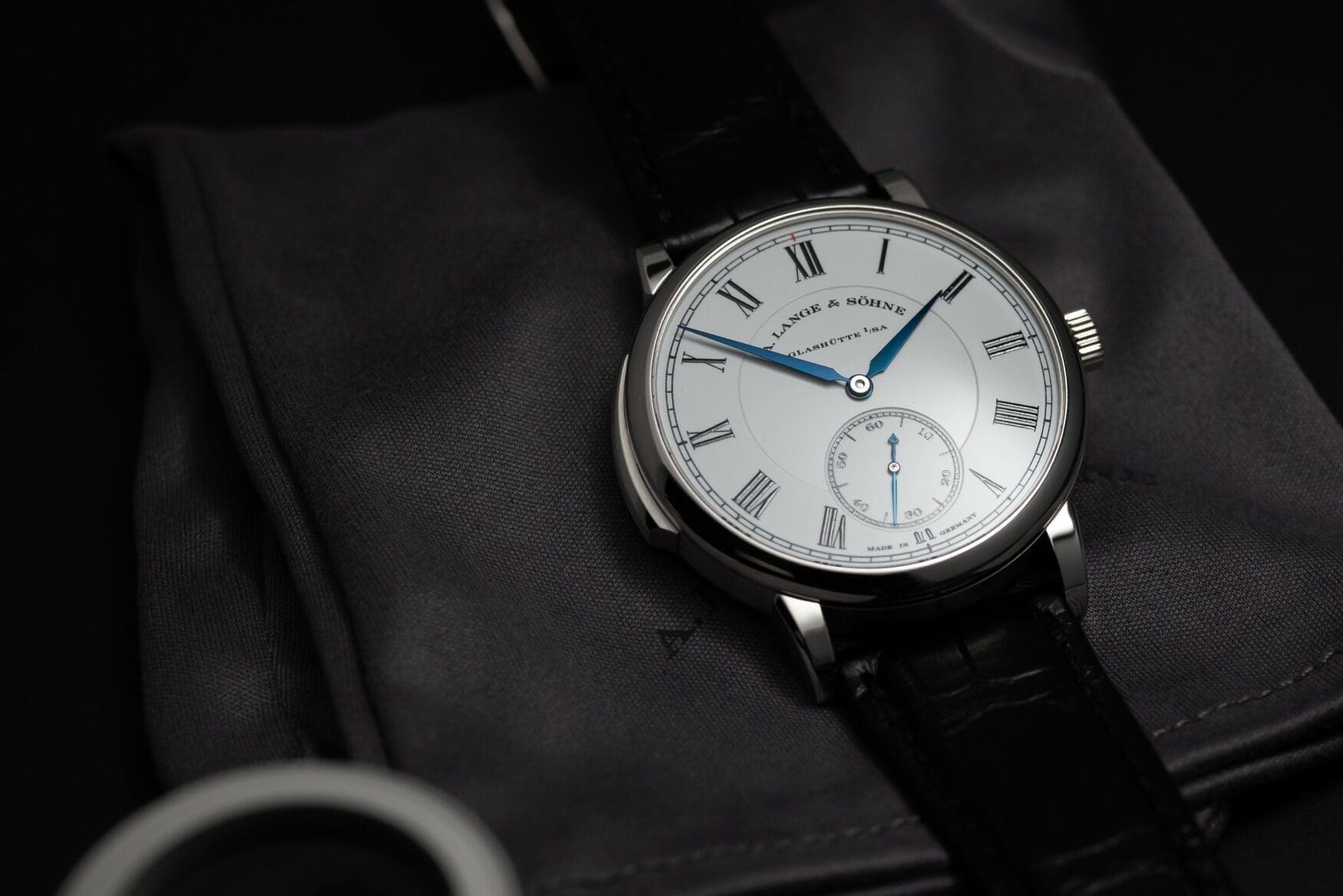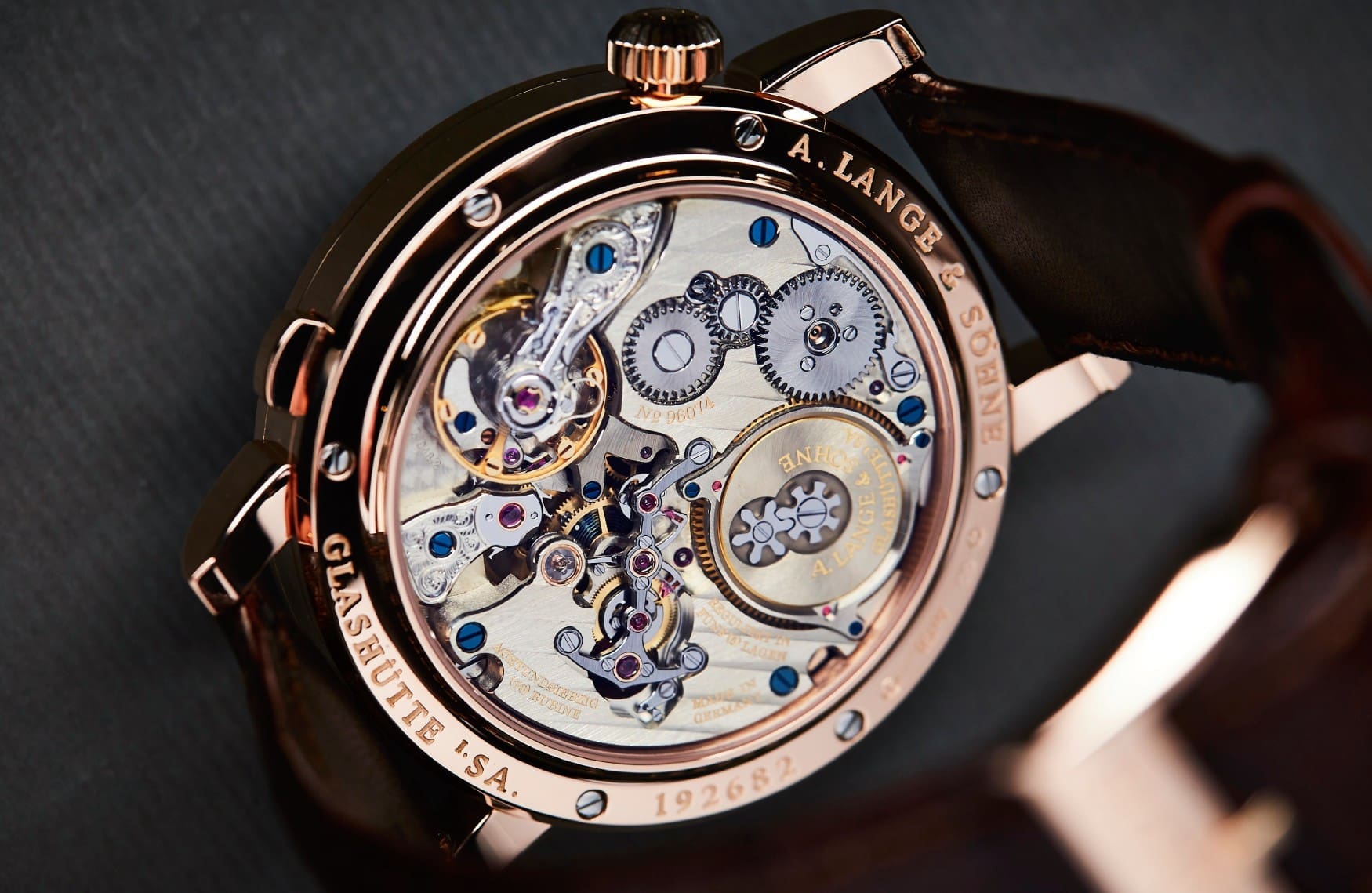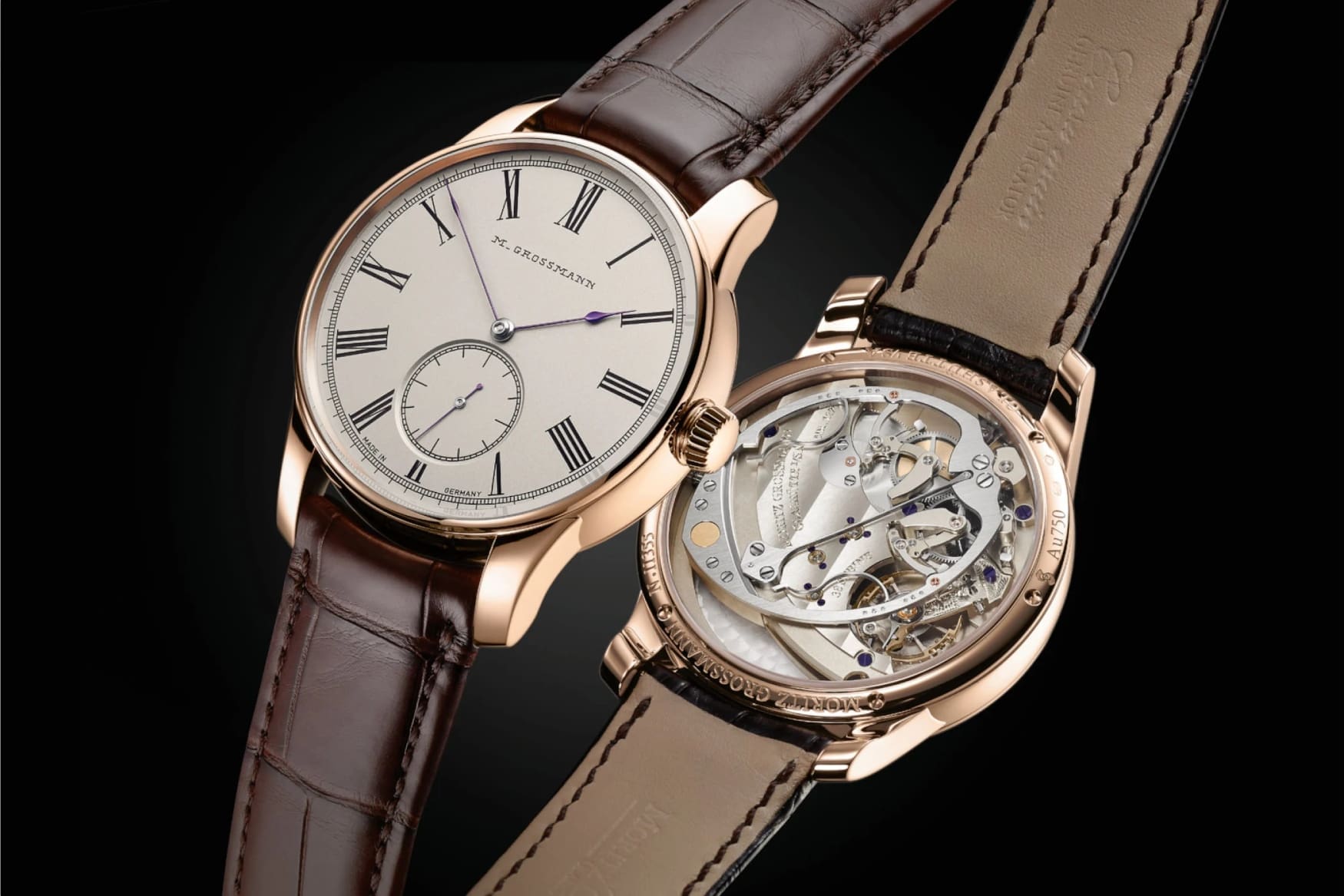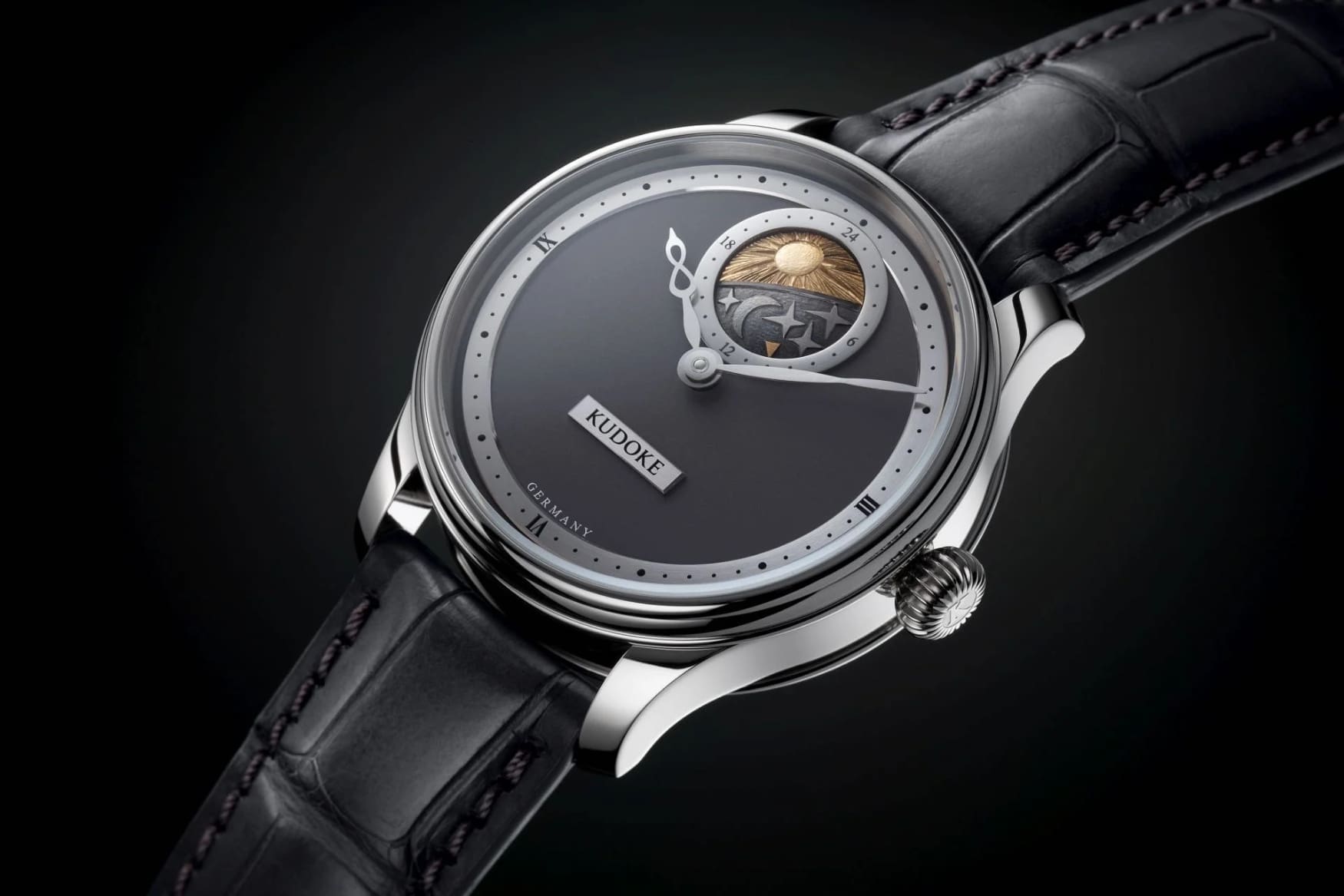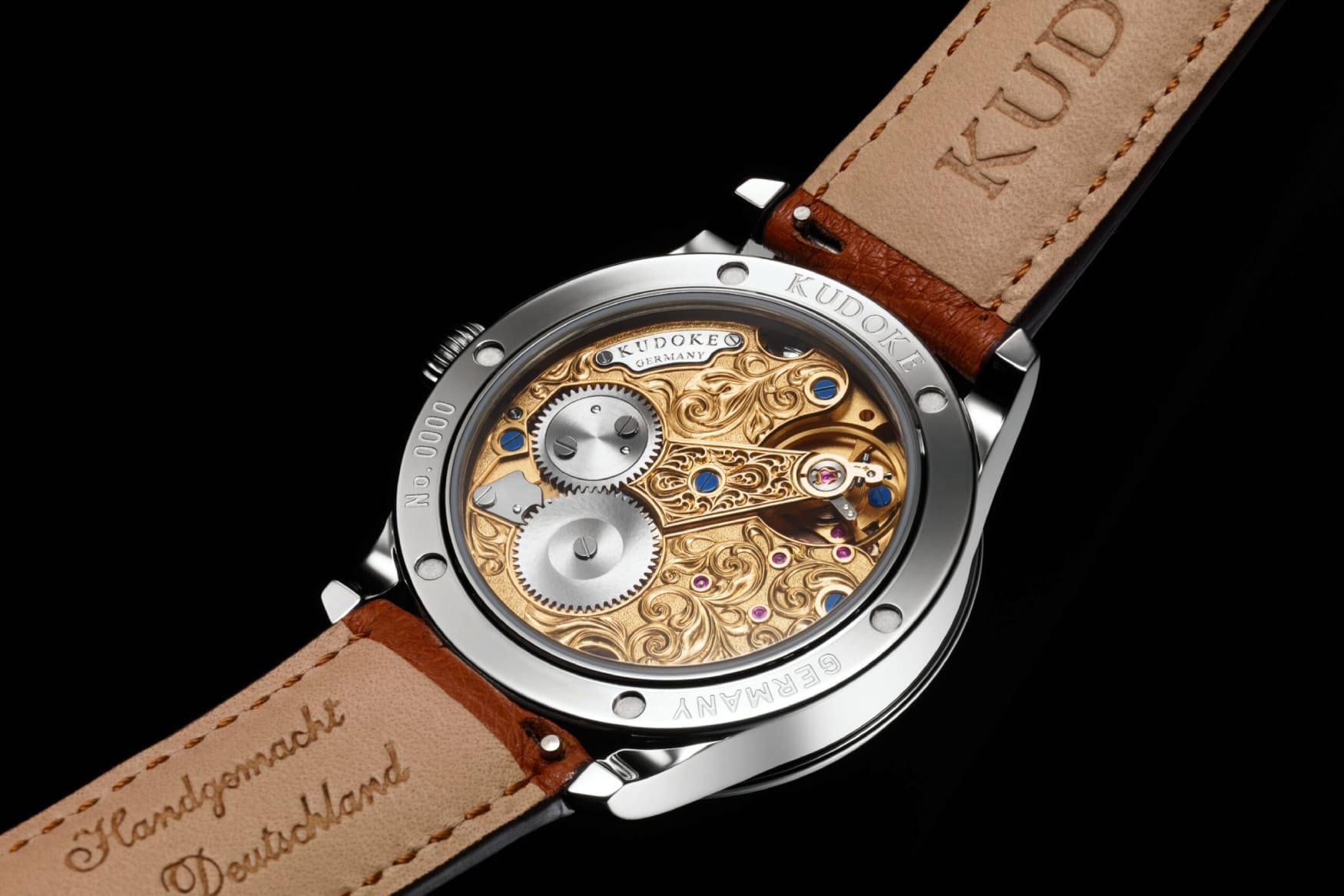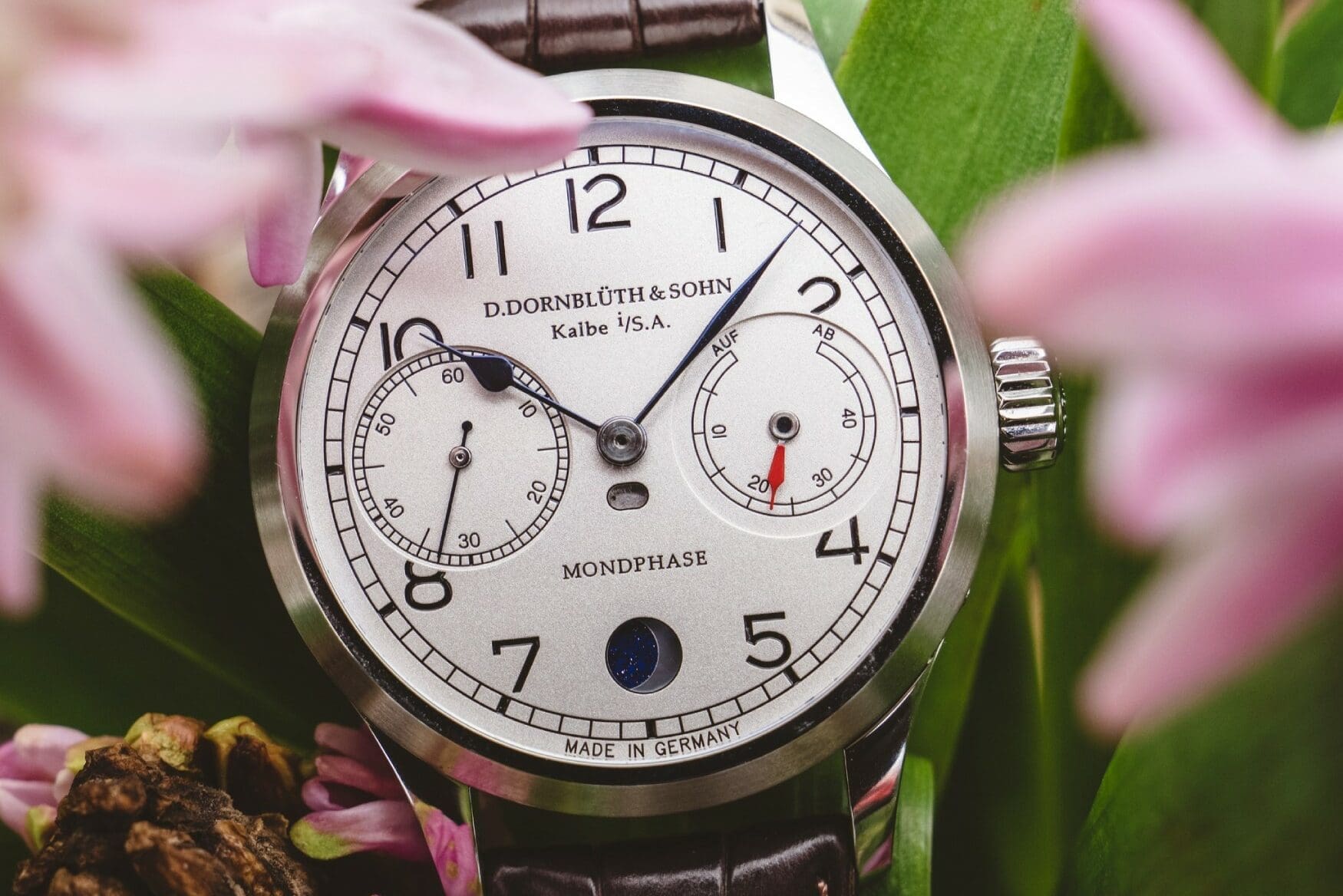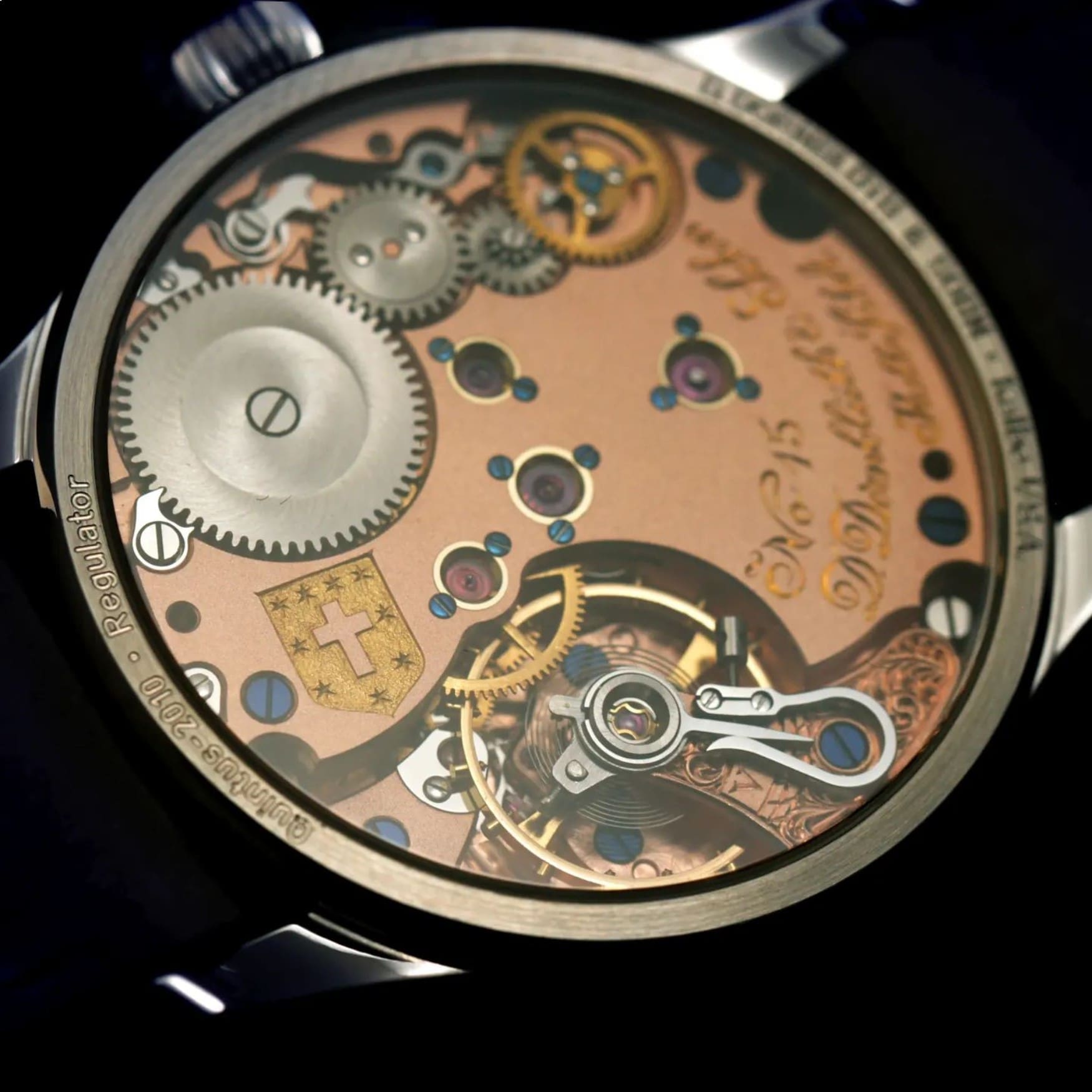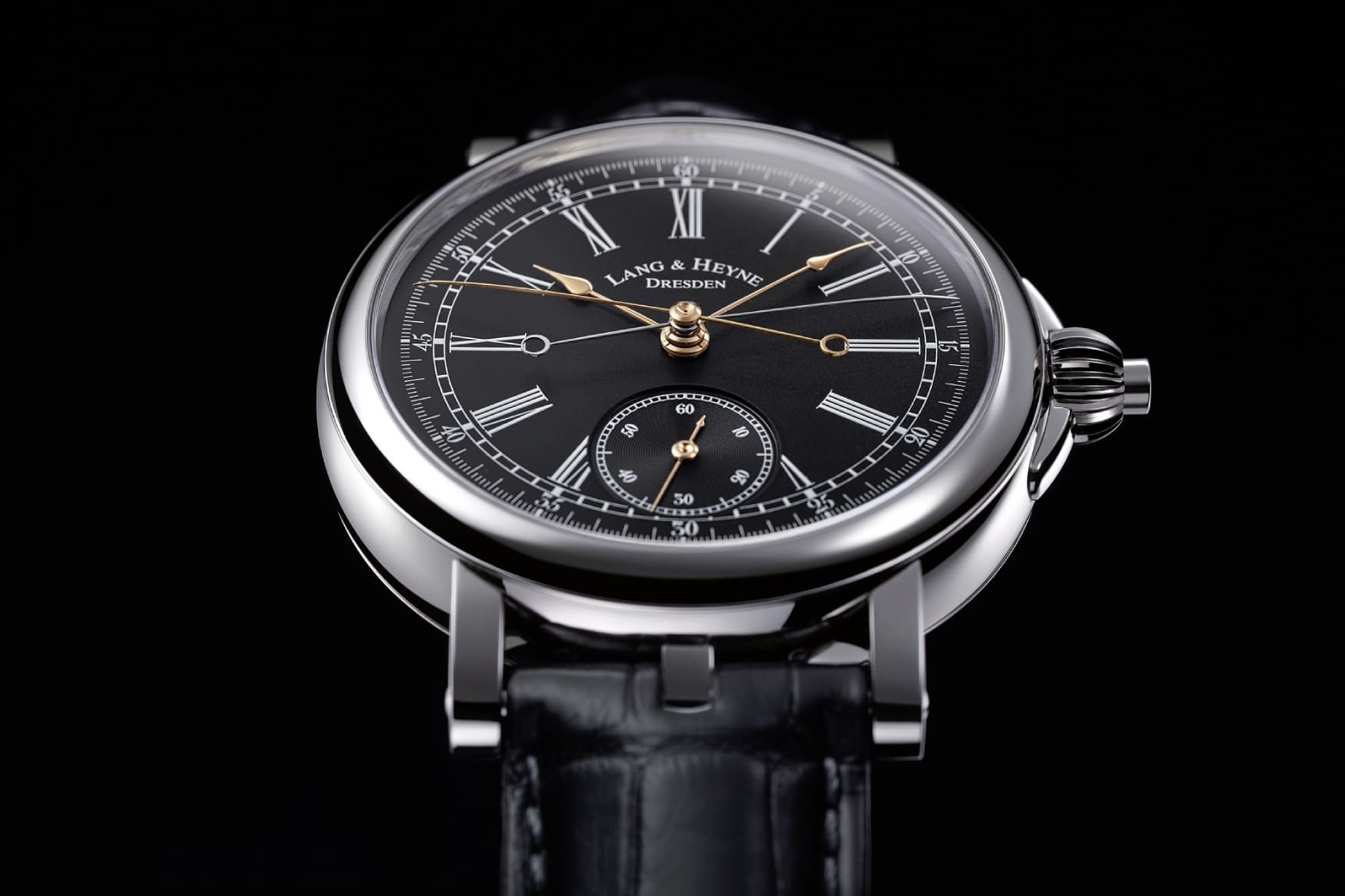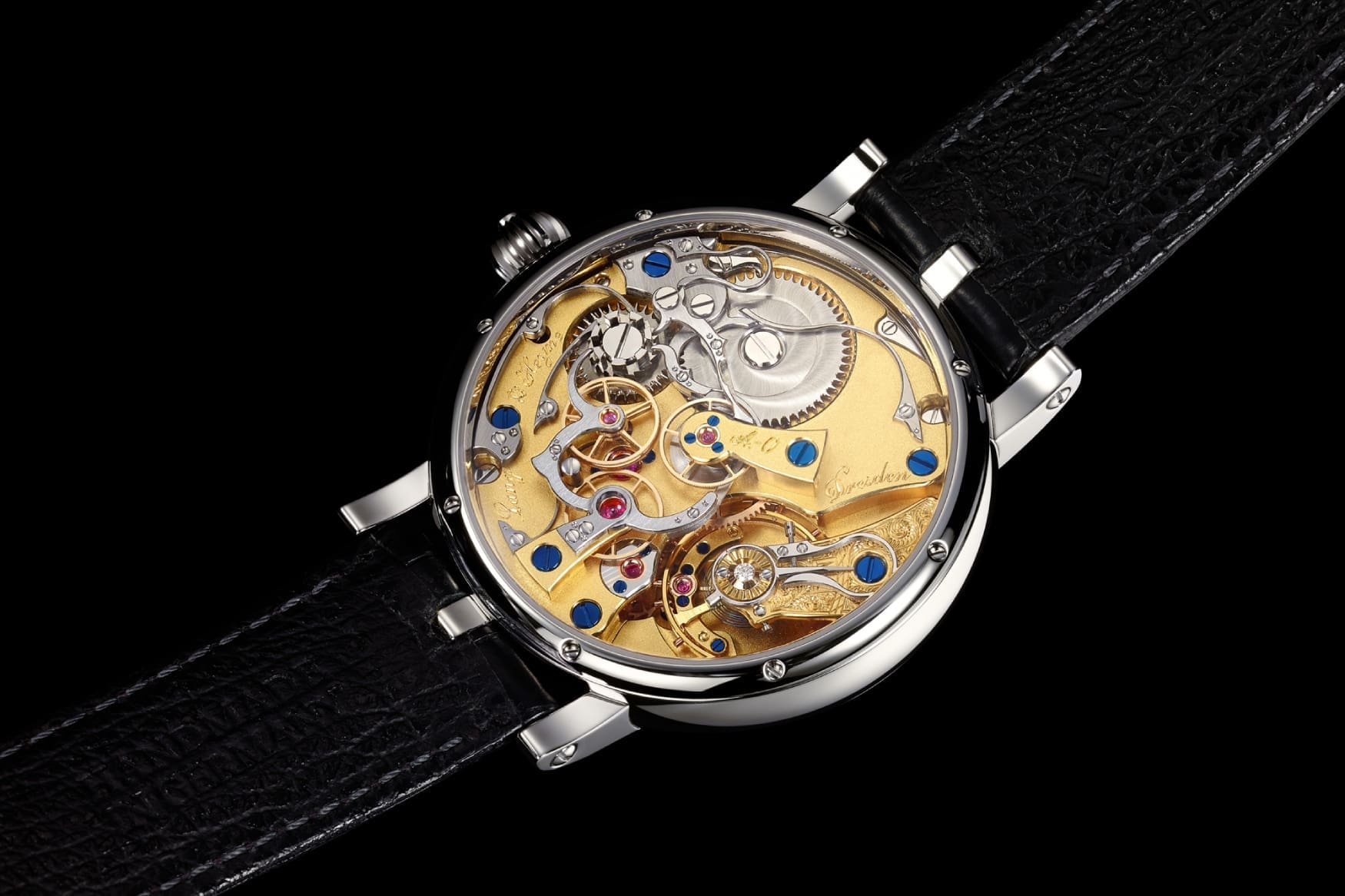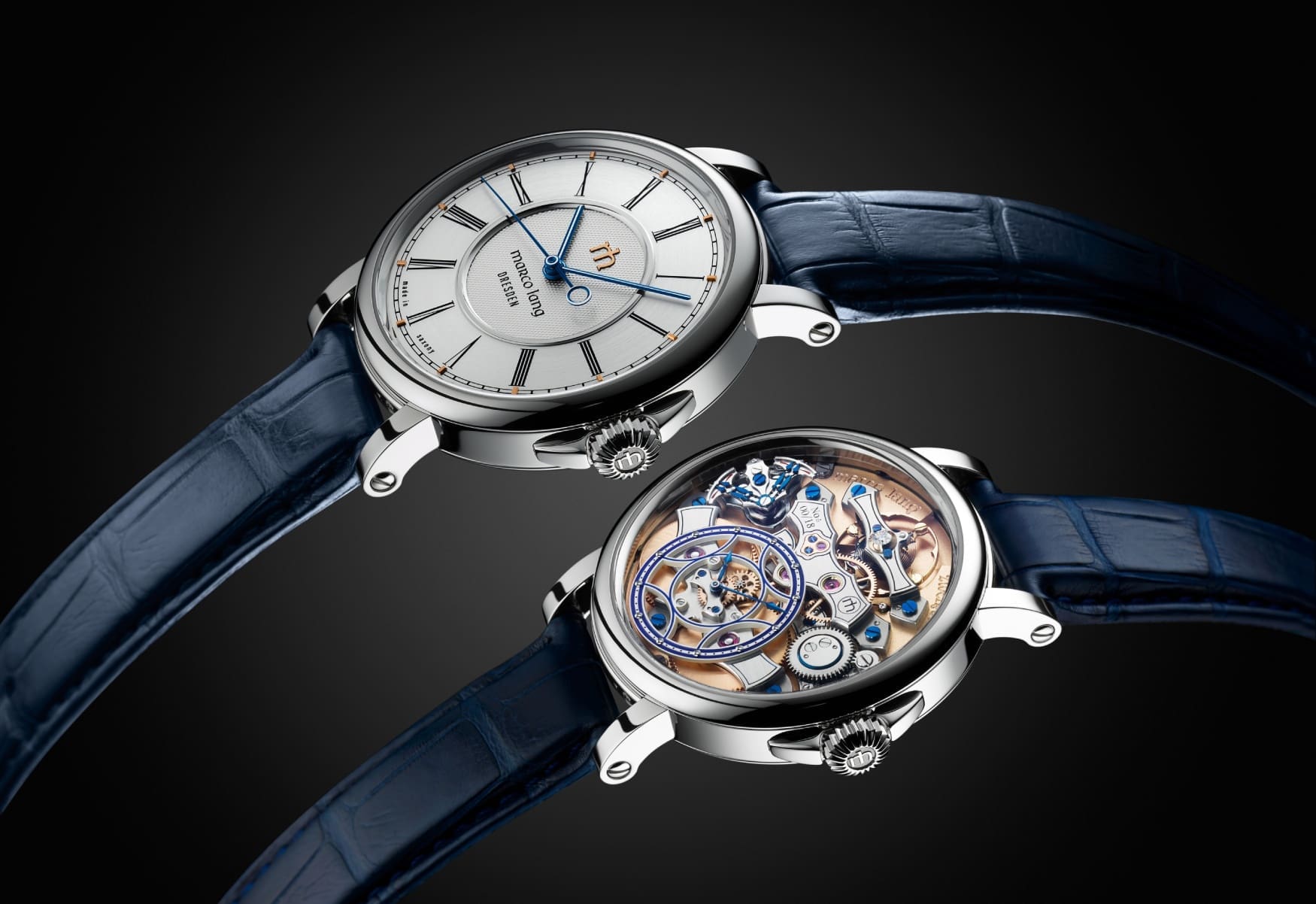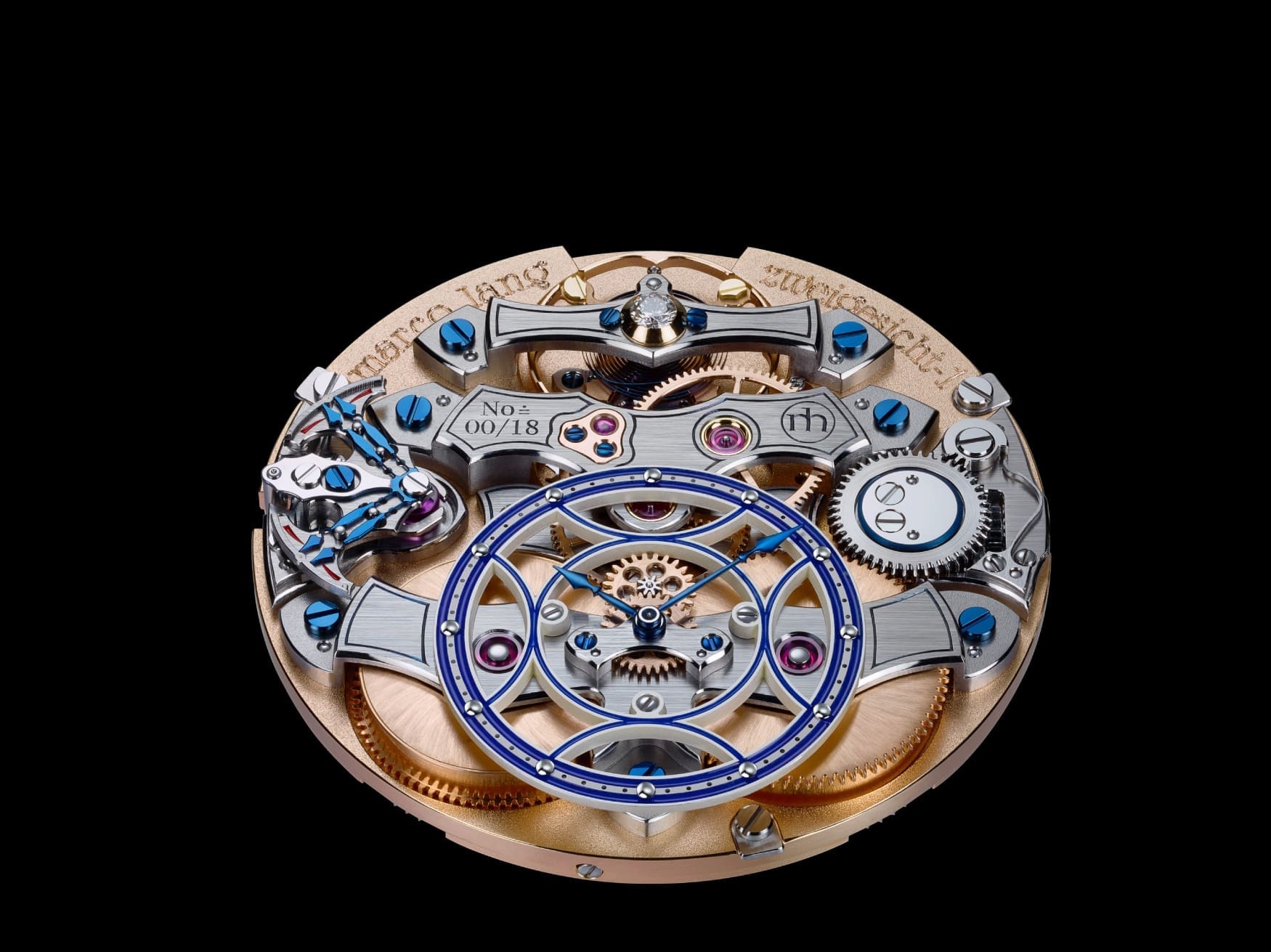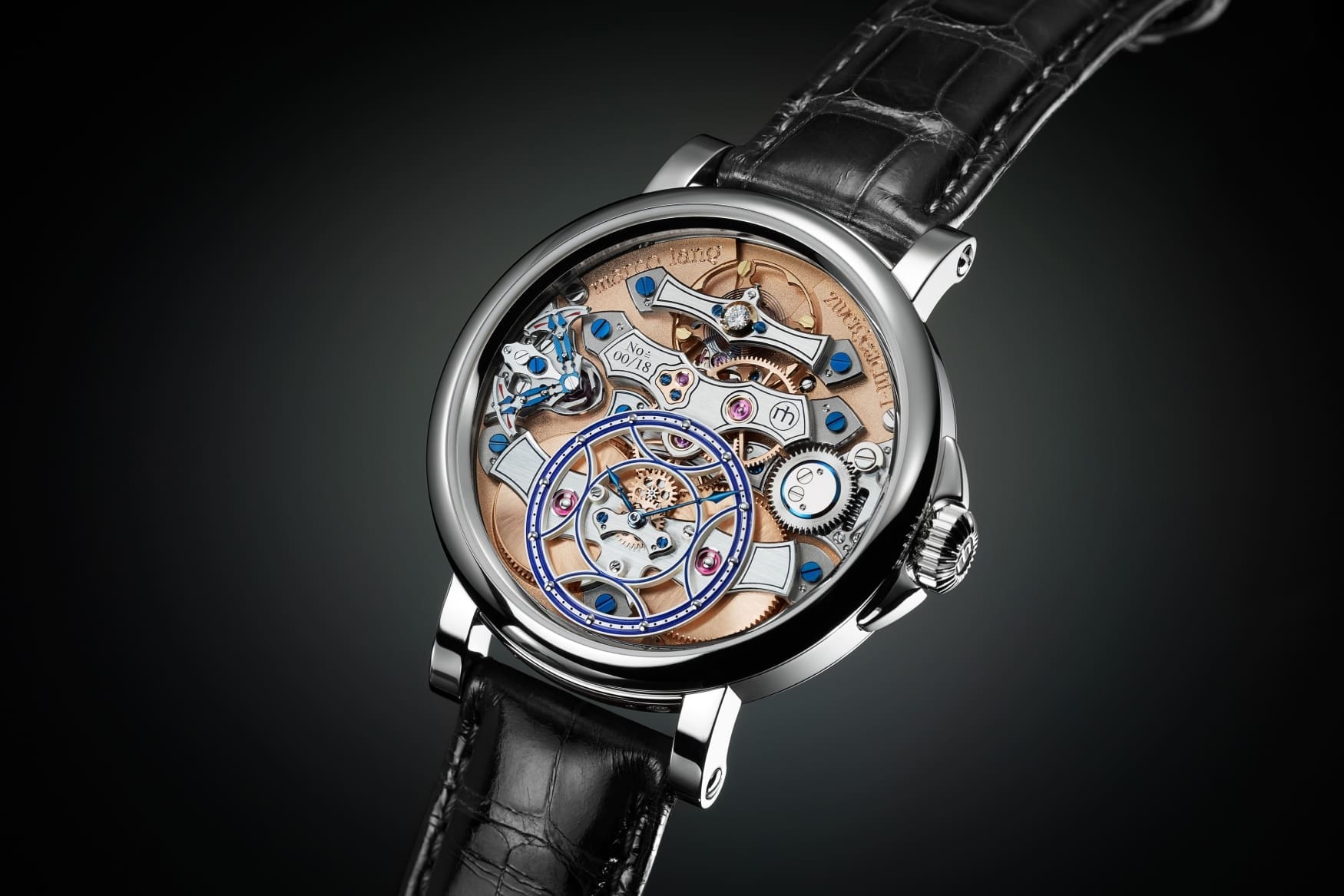The 10 best German watch brands
Borna BošnjakWith the weird and wonderful thing that is the internet, watch aficionados are able to stay better-informed than ever. The knowledge of small, niche brands is no longer exchanged only between the most seasoned of collectors, which just means more competition between the brands – a win-win for the consumer. This also means that the watchmaking focus is able to shift away from the snowy peaks of the Swiss Alps, and should you direct it towards Germany, you’ll find that it’s a watchmaking epicentre with much more to offer than immediately meets the eye. Read on to find out the best that Germany has to offer – from Bauhaus-inspired minimalism and Teutonic ruggedness to the very finest hand-finishing and engraving you’ve ever seen. In the list of 10, I took the liberty to select my favourite or the best-known models from the brand’s offering to get you started.
Junghans
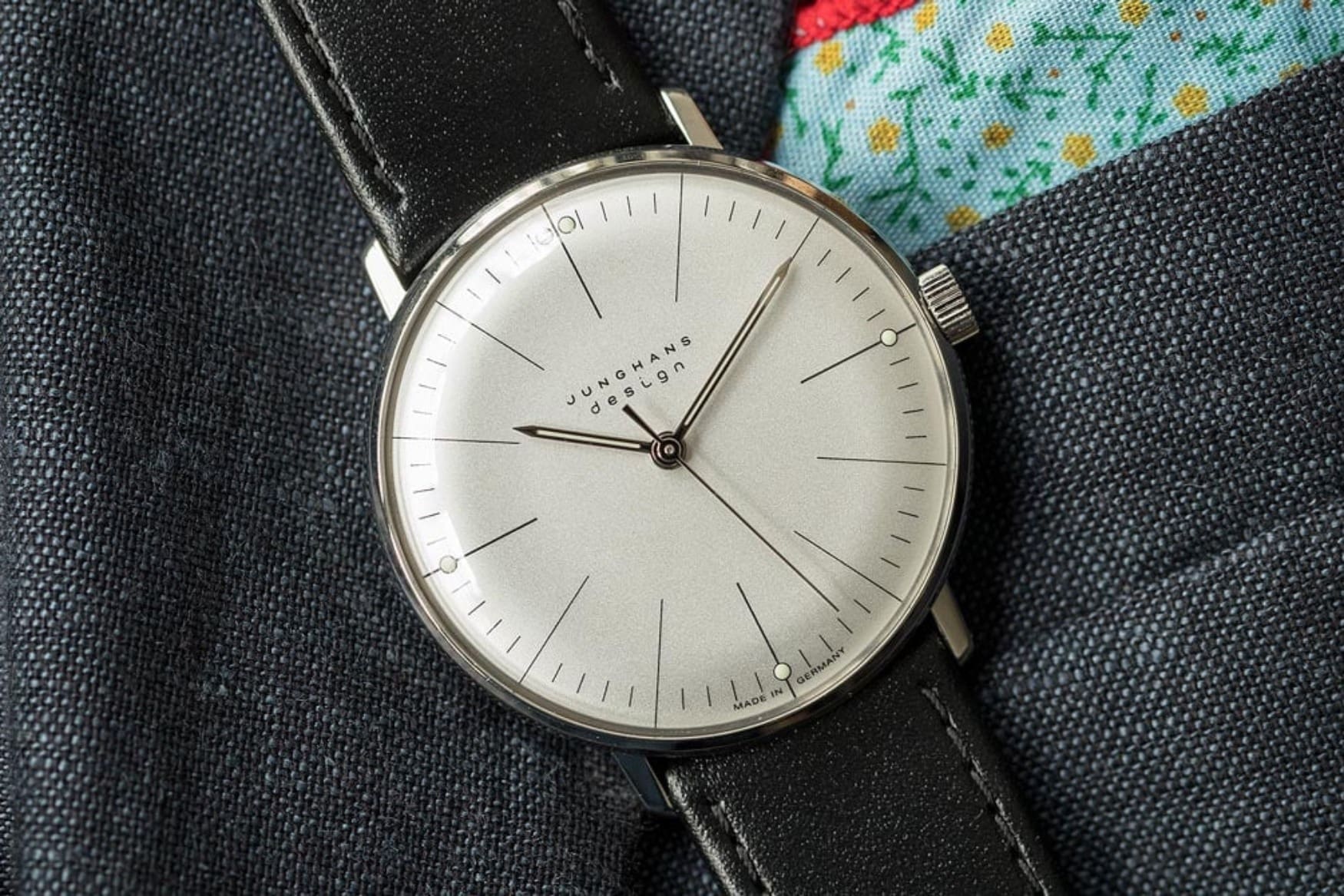
For a company with over 160 years of manufacturing know-how, iconic designs and designers, Junghans sure does fly under the radar. The Black Forest watchmaker’s Max Bill designs – whether in the form of watches, clocks or kitchen timers – remain some of the best examples of classic Bauhaus around. The Max Bill Handaufzug (Handwound) is just about everything you need from a watch – it’s simple, reliable and beautiful – and has a funky name. Its ETA-base movement is good for 42 hours of power reserve, while the 34mm x 9mm case stays totally minimal. If you’re up for something bolder, however, check out the bright 1972 FIS chrono, the sponsor of the Nordic World Ski Championships.
Nomos
If you’re at all familiar with German watchmaking, you’ll be familiar with Nomos. The brand is often touted as the perfect stepping point to the next level for many collectors, though they’re often associated only with entry-level value, likely due to the success of the Nomos Club Campus. While the likes of the Tangente (pictured above) formed part of Nomos’ beginnings as one of the five Bauhaus-inspired designs the brand launched with, they also dabble with the high-end – their Lambda is the only proof you need of their watchmaking capability.
Sinn
The first two entrants on this list took minimalism and applied it to a watch – but what about that well-known German resilience, durability and precision? That is where Sinn comes in. The main focus of the Frankfurt brand is hard-wearing tool watches like the 104 (above) or the well-respected U1 diver, though their Classic and Frankfurt Financial District lines show off their refined side, too.
Glashütte Original
Another brand hailing from the watchmaking-rich Saxony region is Glashütte Original. Its roots originate from watchmakers that have given their names to other famous brands on this list, including F.A. Lange of A. Lange & Söhne and Moritz Grossman and his eponymous brand, before a tumultuous era in communist East Germany under the GUB name that eventuated into the Glashütte Original we know today in 1994. Since 2000, the brand has been under the Swatch Group umbrella, and has kept close ties with its historical designs such as the Sixties Chronograph pictured above and the Senator Excellence Perpetual Calendar, a classic with a contemporary new look.
The brand also operates the Alfred Helwig School of Watchmaking, named after the inventor of the flying tourbillon and the inspiration behind “the perfect watch for an eccentric but jaded billionaire”, according to our own Luke Benedictus. Glashütte Original aren’t just makers of past catalogue re-issues however, also offering distinctly modern pieces like the PanoInverse, with its offset time indicator and intricately engraved balance bridge.
A. Lange & Söhne
I’m sure you were wondering why it took so long to get to A. Lange & Söhne. The brand has seen increasingly frequent holy trinity shouts, which is praise enough for many to forget that Lange has one of the most inspiring rags to riches stories around. Much like many other German watchmakers, the First and Second World Wars meant a halt to fine watchmaking, replaced by military supply production – huge B-Uhr fliegers with sterile dials and A. Lange & Söhne-signed movements are some of the most intriguing vintage pieces around, in my personal opinion.
Come the 1990s, and with the help of IWC and JLC veteran Günter Blümlein, Walter Lange, the great-grandson of the founder, re-launched the family brand. Lange became part of the Richemont group at the turn of the millennium, and has since produced watches that are truly deserving of the icon moniker – the Lange 1 and Datograph, to name a few.
Moritz Grossman
A brand that does old-school in a new-school way has to be Moritz Grossman. The Glashütte-based watchmaker has been highly focused on producing the finest German handicrafts, as their motto would suggest, and have been doing it since the 19th century. Having laid dormant for a while, the brand was resurrected in 2010, and since gone from success to success. While Moritz Grossmann have many a complication under their belt, including a tourbillon and a unique world-timer, their strength lies in the gorgeous hand-finishing in the likes of the Tremblage and innovative movements like the Hamatic winding system – a personal favourite, I mean, just look at those heat-purpled hands.
Kudoke
Stefan Kudoke is a name that should instantly come to mind should you be thinking about adding a watch from an independent to your collection. The level of finishing on one of Kudoke’s pieces is quite frankly ridiculous for the price point, which starts at US$8,630 for the Kudoke 1, and just a smidge more for the Kudoke 2 Nocturne above.
Admittedly, those prices are only for the most basic of movement finishes, as more elaborate engraving or skeletonising of the Habring co-developed Kaliber 1 will quickly add to the price tag. Nevertheless, even in its most specced-out variant, the movement is a sight to behold, least of all for its phallic layout.
D. Dornblüth & Sohn
Much like Moritz Grossmann, D. Dornblüth & Sohn makes the most of a classical design language reminiscent of marine chronometers. The brands on the list thus far have seen a fair amount of coverage, but D. Dornblüth & Sohn is still one of these IYKYK manufacturers making incredible pieces. I adore the three-dimensional shape of the hands, as well as the subtle moonphase integration at 6 o’clock, all cased in a simple 40mm steel case.
A watchmaker of this calibre (pun intended) has an in-house movement in their line-up – the Q-2010.REG seen above features a double barrel, and a patent-pending Maltese cross spring for near-linear torque delivery, and I needn’t mention the lovely decoration. Many other Dornblüth movements are based on ETA’s workhorses, and then extensively modified, though they’re nothing to scoff at, either.
Benzinger
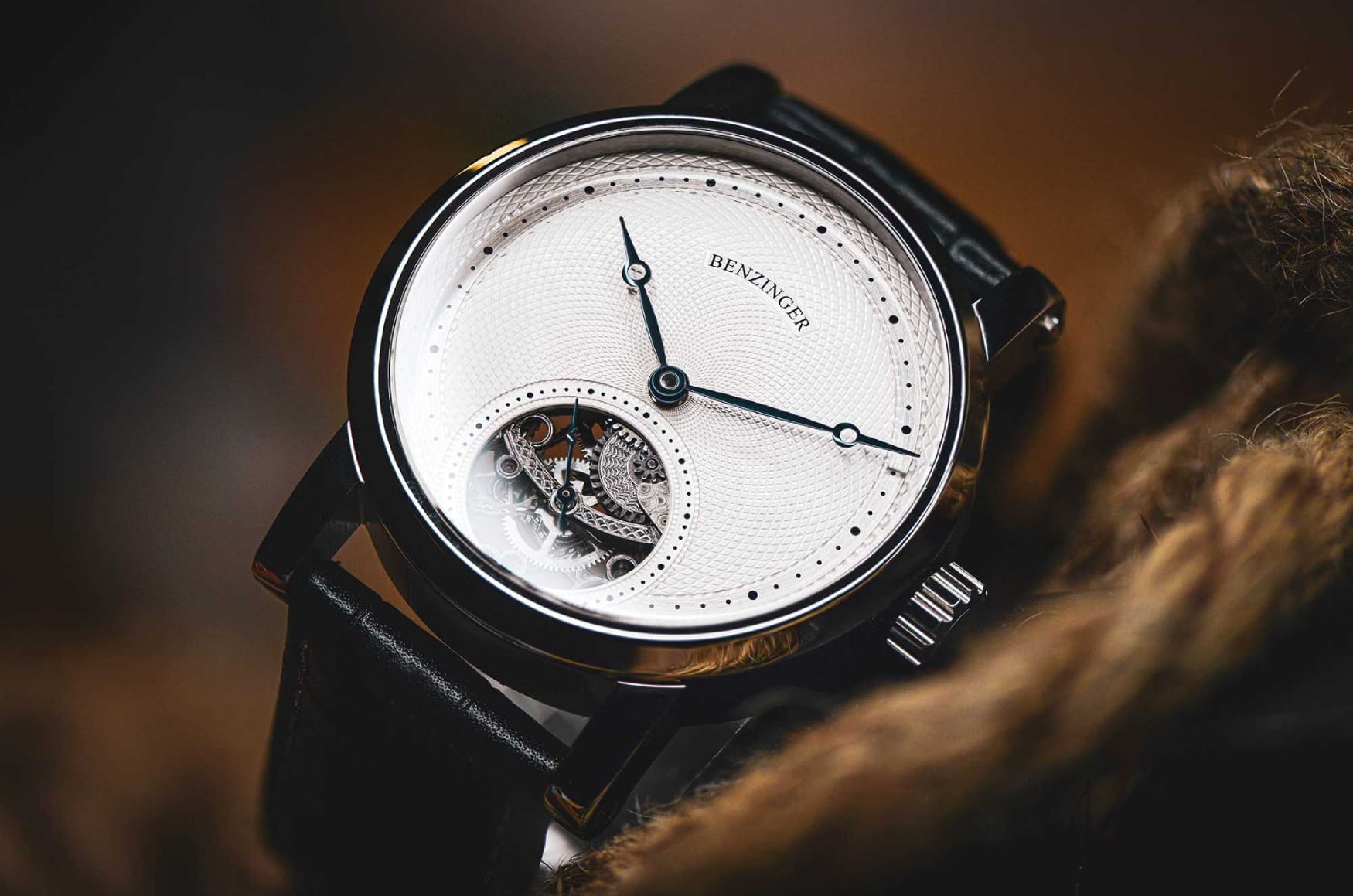
There aren’t many craftspeople around that have the skills of Jochen Benzinger. The German is a master of engraving, skeletonising and engine turning, and his extensive résumé is a proof of that. From dials for IWC, Moritz Grossmann, and Chronoswiss to dashboards for Rolls-Royce and even the famed Fabergé eggs, Benzinger’s work is criminally under-recognised. Splitting his work between his eponymous brand and collaborative efforts Jaeger & Benzinger and Grieb & Benzinger, his work isn’t complete unobtanium, as the Jaeger & Benzinger brand offers pieces at the price point of a modern Tudor.
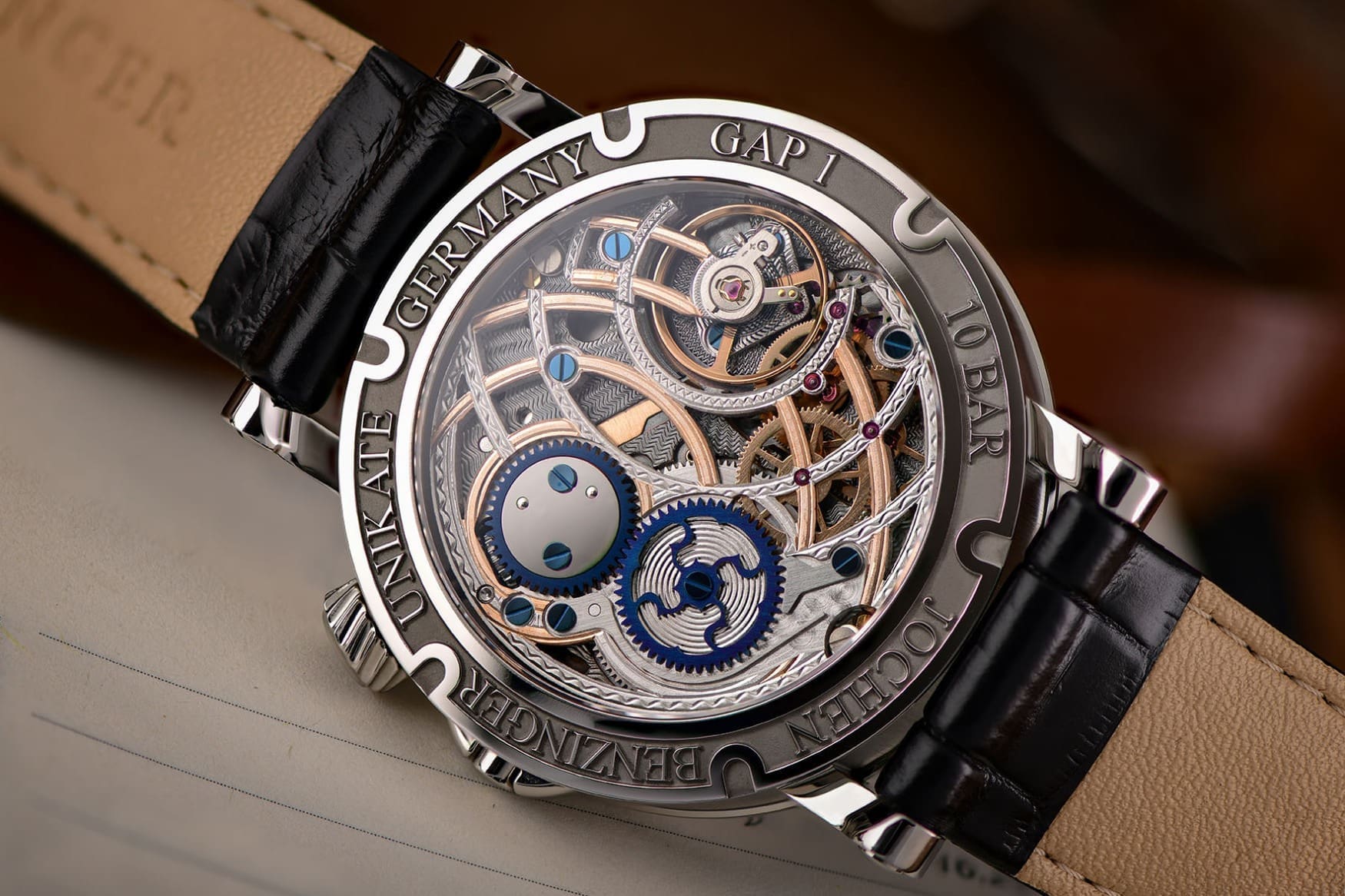
Much of Benzinger’s solo work relies on the Swiss-made Unitas calibre, and while I’m generally not a huge advocate of the importance of in-house anyway, a calibre that’s reworked this extensively just solidifies it further. Naturally, for those who cannot possibly stomach an ETA, the GAP 1 is here. Short for “German Austrian Partnership”, the development of the hand-wound movement was helped by Habring.
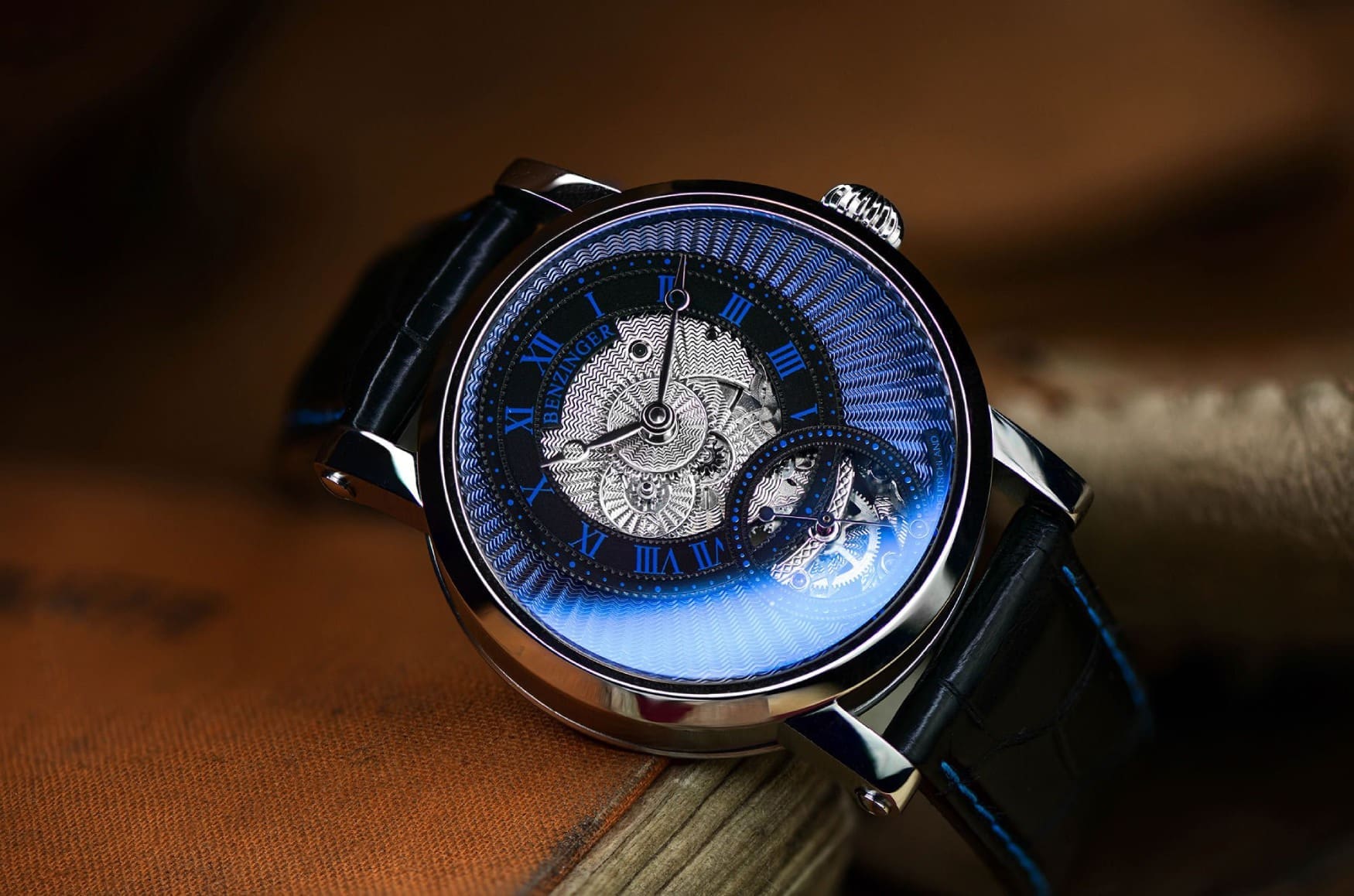
I implore you to do as much research as possible into Benzinger, as the story of the brand, as well as the man, is quite fascinating – this interview by WatchDavid is a great starting point, as are his images that I leave you with.
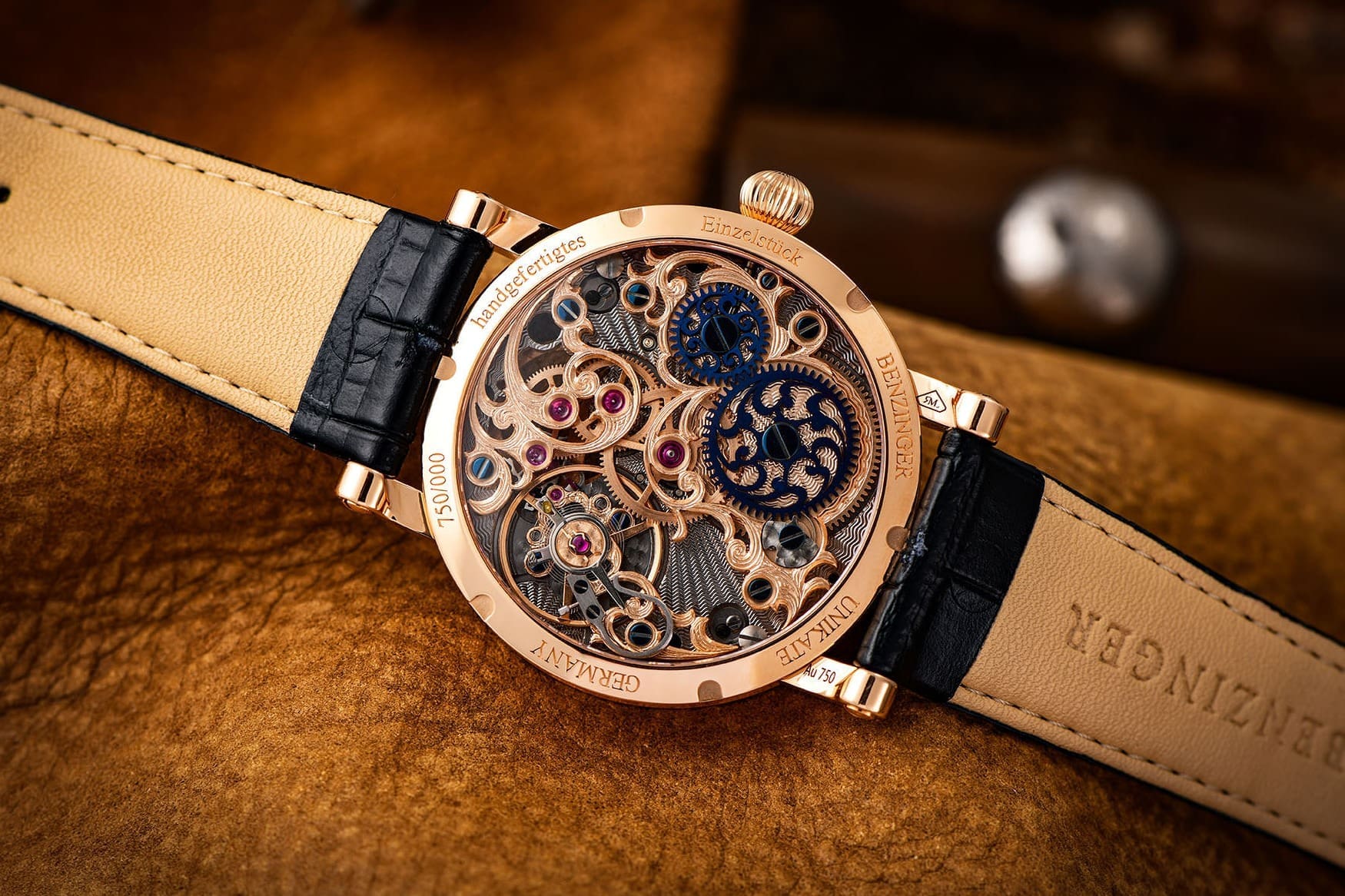
Lang & Heyne
Dresden-based Lang & Heyne is just about as good as it gets in a watch, period. The brand was started by Marco Lang and Mirko Heyne in 2001, with the duo presenting their first two pieces (the Friedrich August and Johann) at the Basel watch show the year after. Though initially successful, the duo went their separate ways – Heyne left to join Nomos in 2002, with Lang continuing until 2019, before leaving to create his own pieces, more on which in a bit. Nevertheless, the brand continues to shine and progress, even without the two founders on board.
The Caliber IV (with some Unitas inspiration) that powers the Albert features a monopusher chronograph with central second and minute indication, indicated on a glorious white enamel dial and likely the most beautiful handset you’ve ever seen. And look at that caseback shot – black polishing, frosting, blueing, and a diamond end stone sitting on top of a ruby bearing for the balance wheel – also worth mentioning that the bridge, baseplate, chronograph and hairspring are all made in-house. The Albert is my idea of perfection – but as no watch is perfect, I get to complain about the 44mm diameter. But everything else is that perfect.
Honourable mention – Marco Lang
I’ve mentioned Marco Lang as one of the founders of Lang & Heyne, but that’s not giving his work the deserved amount of credit. Since leaving, he’s focused on his own brand, and the Zweigesicht-1 is the culmination of his expertise. It gives the wearer a choice of which dial to wear at any particular moment by simply switching the strap around. The more classic dial is exactly that, a no-nonsense, suave example that’s finished to a tee.
If you’re like me, however, you’ll be wearing the watch on its flip side the entire time – just look at it. The blued components shine against the richly brushed bridges, and just by looking at it further, I think I’m realising I’ve got a thing for beautifully finished watch hands. The rich blue in the openworked silver dial is grand feu enamel, held in place by one of Lang’s flying bridges.
If you’re wondering about the strange indicator at 9 o’clock, that is actually a shock indicator that shows the forces in both directions, indicating the X and Y coordinates, reset by an integrated corrector, because why not.




